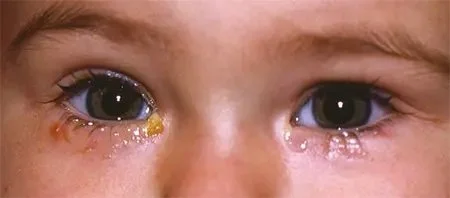Common Eyelid problems related to dry eye disease: Part 6a: When tears run over the eyelids (visibly crying when you don’t mean to, Part 1 of 2)
I an earlier post (and what I will call “Part 1 of this discussion), I touched on “reflex tears;” https://www.eyethera.com/blog/overly-salty-tears - this is the salty tear “fire hose” we cry with when we get something in our eyes, or become emotional, or when the “sprinkler system” that makes the better, “salad dressing” tears, lets us down. Because the “fire hose” likes to run off one speed – full on – this kind of tear will commonly run over the lids and we can visibly cry. Making more and better “salad dressing” will help avoid the reflex tearing common to patients with dry eyes (most pronounced on cold, windy days, but also when we stare too long at computer screens or have air conditioning aimed at our faces). When these salty tears are blinked into our tear ducts, we can get a salty taste in the back of our throat – because that is where all our “spent tears” should go. My analogy clarifying that “circulation” is that tears are the lifeblood of the surface of our eyes – a blink is the heartbeat that refreshes or “circulates” that blood-like product over the surface and the tear ducts (located in the inner corner of our eyelids) act as the plumbing drains that connect the eye’s surface with our nose (and allows the old, used up tears a place to go, without running down our face).
Part 2 (next week’s post) is what happens when that tear duct system clogs or otherwise becomes non-functional.
But first, we need to understand that tear duct function - to understand what can make it “go wrong.”
The “Nasolacrimal Duct” or Tear Duct between the eye and the nose.
This simplified diagram shows the basic anatomy but doesn’t explain the full process. Generally, when a tear gets used up, there will be evaporation followed by some dry spots developing, that upset some of the corneal nerves and triggers a blink reflex. As the lids glide over the eye, there is a “windshield wiper-like” function that wipes the old tear towards the inner corner of the eye and brings some fresh tears up from the little “well” housed beneath the lower lid, to replace it. What happens as the lids compress and close, is that the muscles “squish” the little sac near the nose (connected to the tear plumbing), so that when the lids open, there is “suction” as the sac pops back up (a form of suction pump) – and this draws the tear into that plumbing from the little storage area in that inner corner (the lacrimal lake) of the eye. Further “pumping” of those tears will continue to “flush” the tears along the plumbing and into the nose. This helps explain the salty taste we can get from extended reflex tearing (crying) when those salty tears go down the nose, into the back of our mouth and down our throat. It can also explain the “runny nose” we can get with extended or vigorous crying.
In babies, the last portion of this system to develop is the portion of the tear duct that enters the inside of the nose. There is a small “valve” (of Hasner) that can be “stuck,” so it functions as a membrane blocking the final flow of tears into the nose. While up to 5% of kids can be born with this drainage issue, most outgrow it in the first 6 months of life, since growth of the nose will usually stretch the membrane open. Pediatric Ophthalmologists are trained to diagnose, treat, and if needed, operate on this problem when it occurs.
In my last few posts, I discussed eyelid “outties” and “innies” https://www.eyethera.com/blog/common-eyelid-problems-related-to-dry-eye-disease-part-3-ectropion & https://www.eyethera.com/blog/common-eyelid-problems-related-to-dry-eye-disease-part-4-the-eyelid-innie. When the lids turn in the wrong direction, the opening to the tear ducts can fall outside of the little well and the suction pump can be broken from displaced plumbing and displaced muscles. Irritations from lashes rubbing on the eye or from exposure of moist membranes to drying air can result in excess, reflex tearing. Exposure - like with “TED” (Thyroid Eye Disease https://www.eyethera.com/blog/8lemgnwt0bqqd15fmqr9ljrkdfe420 ) earlier posts on conjunctivochalasis https://www.eyethera.com/blog/what-is-conjunctival-chalasis-cch-and-why-should-i-care including the two followup posts, point to the pleats and folds of the normally smooth membrane that can block tear ducts, and act as a “pour spout” or “waterslide” causing diversion of tears over the lids and away from the normal plumbing. All of these issues can cause patients to present with complaints of tearing, yet each cause is different enough, so as to often require a unique approach to fix it. (I’ve addressed each of these in my earlier posts).
The problem when these are not the problem, is usually related to internal blockages of the plumbing itself. This is my Part 2 of this topic - available next week!
To schedule an appointment with Dr. Jaccoma, call Excellent Vision at either of these two dry eye offices:
(1) 155 Griffin Rd, Portsmouth, NH 03801 (603) 574-2020
(2) 3 Woodland Rd, STE 112 Stoneham, MA 02180 (near Boston) (781) 321-6463


